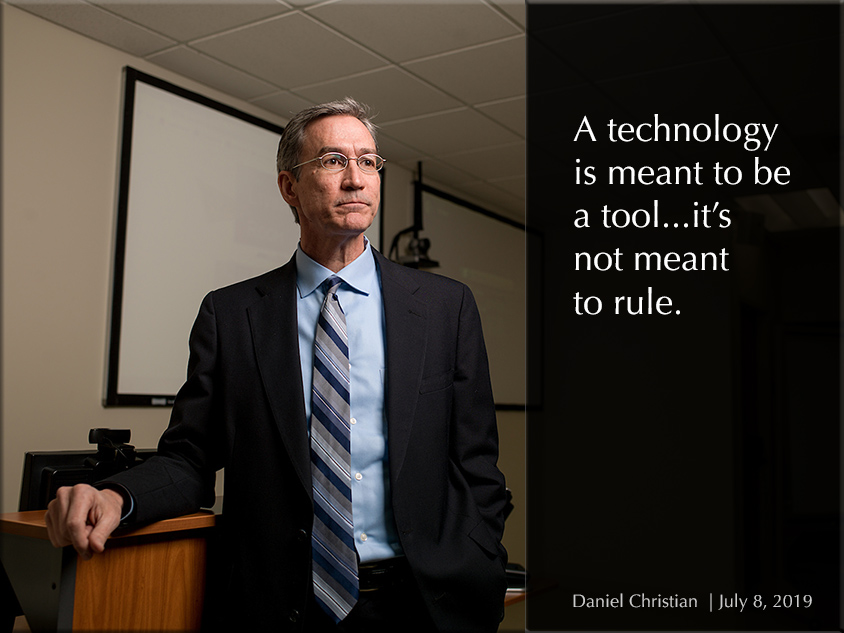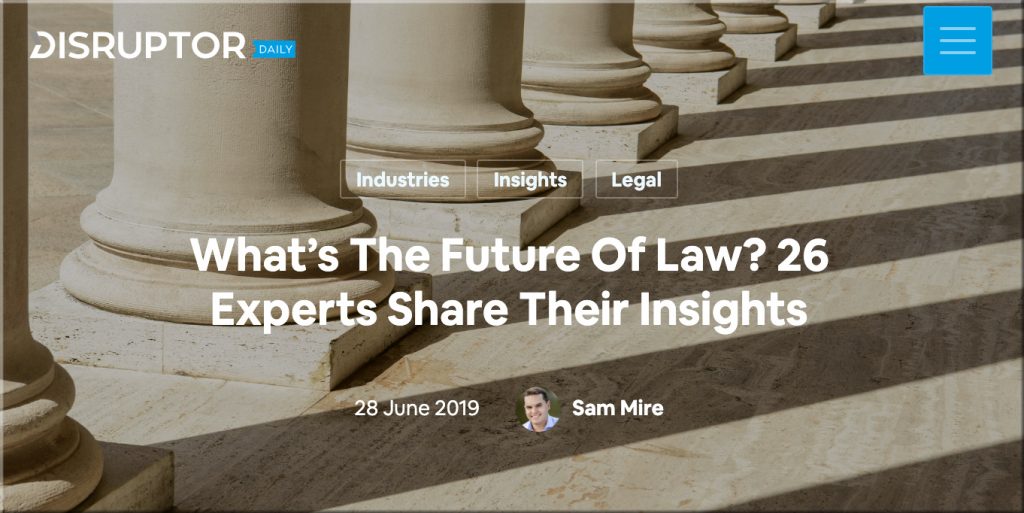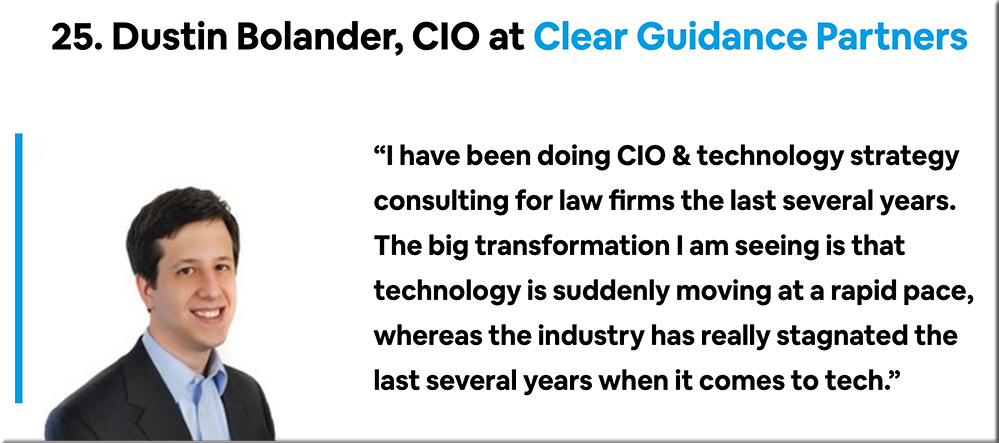Is It Already Time To Have Laws For Outer Space? https://t.co/hET2FJcNhE
— Daniel Christian (@dchristian5) July 20, 2019
The future of work in America — from mckinsey.com by Jacques Bughin, James Manyika. and Jonathan Woetzel | July 2019
Excerpts (emphasis DSC):
Local economies across the country have been on diverging trajectories for years, and ***they are entering the automation age from different starting points.*** Our view incorporates the current state of local labor markets as well as the jobs that could be lost and gained in the decade ahead.
The US labor market looks markedly different today than it did two decades ago. It has been reshaped by dramatic events like the Great Recession but also by a quieter ongoing evolution in the mix and location of jobs. In the decade ahead, the next wave of technology may accelerate the pace of change. Millions of jobs could be phased out even as new ones are created. More broadly, the day-to-day nature of work could change for nearly everyone as intelligent machines become fixtures in the American workplace.
…
The labor market could become even more polarized. Workers with a high school degree or less are four times as likely as those with a bachelor’s degree to be displaced by automation. Reflecting more limited access to education, Hispanic workers are most at risk of displacement, followed by African Americans. Jobs held by nearly 15 million workers ages 18–34 may be automated, so young people will need new career paths to gain an initial foothold in the working world. Roughly 11.5 million workers over age 50 could also be displaced and face the challenge of making late-career moves. The hollowing out of middle wage work could continue.
…
The future of work is not just about how many jobs could be lost and gained. Technology is altering the day-to-day mix of activities associated with more and more jobs over time. The occupational mix of the economy is changing, and the demand for skills is changing along with it. Employers will need to manage large-scale workforce transformations that could involve redefining business processes and workforce needs, retraining and moving some people into new roles, and creating programs for continuous learning. This could be an opportunity to upgrade jobs and make them more rewarding. The choices that employers make will ripple through the communities in which they operate.
The need for a next gen learning platform is quickly approaching us!
Either that, or colleges and universities better get FAR more
responsive/nimble, and focus FAR more on lifelong learning.
This is not a joke.
This is not just text on a web page.
This is a future that’s barreling at us at amazingly fast speeds.
A new chapter is coming at us quickly.
Why law faculty need to learn about legal tech and what they need to know — from aals.org by Catherine Sanders Reach and Michael Robak — with special thanks to Kim O’Leary, Tenured Professor at WMU-Cooley Law School for this resource
Excerpts:
Technology is playing an ever-increasing role in the profession of law and the delivery of legal services. Legal educators must give real consideration to the role of technology in the legal profession if legal educators are going to sufficiently prepare law students to practice law in the 21st century. In this webinar, the presenters will explain why law faculty need to learn about legal tech and what they need to know.
Click here to watch this webinar on-demand. You will be asked for your contact information before viewing.
Also see:
Tech Competence That Solo and Small Firm Lawyers Really Need: Resources Here
Excerpt:
DIGITAL ASSETS AND ESTATE PLANNING
Many estate planning lawyers are hopelessly behind on assisting clients in making provisions for digital assets. In so doing, they expose themselves to malpractice. Without proper provision for digital assets, beneficiaries can lose out on substantial sums of money that they cannot locate or access. Many lawyers I’ve spoken with have dismissed digital assets figuring that most older clients aren’t using the Internet. But that’s not necessarily the case. To the contrary, older clients may indeed be using the Internet but not be aware of the need to make provisions for disposing of assets. At some point, lawyers will be sued for failing to advise on digital assets- and deservedly so.
Also see:
- What Law Faculty Need to Know About Artificial Intelligence – 6/12/19
(watch on-demand video) - Ideas for Using Legal Tech to Address Access to Justice Issues – 6/19/19
(watch on-demand video)
FTC reportedly hits Facebook with record $5 billion settlement — from wired.com by Issie Lapowsky and Caitlin Kelly
Excerpt:
AFTER MONTHS OF negotiations, the Federal Trade Commission fined Facebook a record-setting $5 billion on Friday for privacy violations, according to multiple reports. The penalty comes after an investigation that lasted over a year, and marks the largest in the agency’s history by an order of magnitude. If approved by the Justice Department’s civil division, it will also be the first substantive punishment for Facebook in the US, where the tech industry has gone largely unregulated. But Washington has taken a harsher stance toward Silicon Valley lately, and Friday’s announcement marks its most aggressive action yet to curb its privacy overreaches.
Also see:
- Facebook gets its $5 billion slap on the wrist. Now will it change its ways? — from fastcompany.com by Ruth Reader
Top 9 Ways Artificial Intelligence Prevents Fraud — from forbes.com by Louis Columbus
Excerpt:
Bottom Line:
Rule-based engines and simple predictive models could identify the majority of fraud attempts in the past, yet they aren’t keeping up with the scale and severity of fraud attempts today. Fraud attempts and breaches are more nuanced, with organized crime and state-sponsored groups using machine learning algorithms to find new ways to defraud digital businesses. Fraud-based attacks have a completely different pattern, sequence, and structure, which make them undetectable using rules-based logic and predictive models alone.
AI Is A Perfect Match For the Challenges Of Battling Fraud
I opted out of facial recognition at the airport — it wasn’t easy — from wired.com by Allie Funk
Excerpt (emphasis DSC):
As a privacy-conscious person, I was uncomfortable boarding this way. I also knew I could opt out. Presumably, most of my fellow fliers did not: I didn’t hear a single announcement alerting passengers how to avoid the face scanners.
…
As I watched traveler after traveler stand in front of a facial scanner before boarding our flight, I had an eerie vision of a new privacy-invasive status quo. With our faces becoming yet another form of data to be collected, stored, and used, it seems we’re sleepwalking toward a hyper-surveilled environment, mollified by assurances that the process is undertaken in the name of security and convenience. I began to wonder: Will we only wake up once we no longer have the choice to opt out?
Until we have evidence that facial recognition is accurate and reliable—as opposed to simply convenient—travelers should avoid the technology where they can.
To figure out how to do so, I had to leave the boarding line, speak with a Delta representative at their information desk, get back in line, then request a passport scan when it was my turn to board.
From DSC:
Readers of this blog will know that I am generally a pro-technology person. That said, there are times when I don’t trust humankind to use the power of some of these emerging technologies appropriately and ethically. Along these lines, I don’t like where facial recognition could be heading…and citizens don’t seem to have effective ways to quickly weigh in on this emerging technology. I find this to be a very troubling situation. How about you?

DC: A reflection on slide #13 from
Inge de Waard #LegalOperations #Law #Innovation #EmergingTechnologies #AI #LegalTech #CostOfLegalServices #AccessToLegalServiceshttps://t.co/u2tJAwVbxb pic.twitter.com/OS9dRy5fge— Daniel Christian (@dchristian5) July 5, 2019
At 1st glance, looks interesting. On 2nd thought, 911 comes to mind–as well as the noise/traffic in the skies. I already live somewhat near an airport & there R times of the day that R very noisy. I don't want more noise. How do citizens weigh in? #FAA https://t.co/6XDZNhEs0z
— Daniel Christian (@dchristian5) July 3, 2019
From DSC:
A couple of somewhat scary excerpts from Meet Hemingway: The Artificial Intelligence Robot That Can Copy Your Handwriting (from forbes.com by Bernard Marr):
The Handwriting Company now has a robot that can create beautifully handwritten communication that mimics the style of an individual’s handwriting while a robot from Brown University can replicate handwriting from a variety of languages even though it was just trained on Japanese characters.
…
Hemingway is The Handwriting Company’s robot that can mimic anyone’s style of handwriting. All that Hemingway’s algorithm needs to mimic an individual’s handwriting is a sample of handwriting from that person.
From DSC:
So now there are folks out there that can generate realistic “fakes” using videos, handwriting, audio and more. Super. Without technologies to determine such fakes, things could get ugly…especially as we approach a presidential election next year. I’m trying not to be negative, but it’s hard when the existence of fakes is a serious topic and problem these days.
Addendum on 7/5/19:
AI poised to ruin Internet using “massive tsunami” of fake news — from futurism.com
“Because [AI systems] enable content creation at essentially unlimited scale, and content that humans and search engines alike will have difficulty discerning… we feel it is an incredibly important topic with far too little discussion currently,” Tynski told The Verge.
Excerpts:
There’s no crystal ball for the legal industry, just as there’s none for life. That said, industry trends don’t arise out of the ether — they develop over time. These trends collectively form the basis for estimations about what the future of the legal industry will look like.
These industry insiders have studied the trends, and they lent us their insights into the future of law. Take a look:
#AI #legaloperations #legal #lawfirms #lawyers #lawschools #legaltech #disruption #paceofchange
From DSC:
In looking through these perspectives, one can often see the topics of emerging technologies, changing client expectations, and changing business models.
Addendum on 7/1/19:
What Does 2019 Hold for Legal AI? — from law.com by Emily Foges
What developments can we expect in the next year? Where and in what new ways will AI tools be deployed?
Just as accountants no longer imagine life without excel, lawyers will soon be unable to imagine their day-to-day without AI.
…
Technology should be seen to work seamlessly in tandem with the lawyers, surfacing relevant and pertinent information which the lawyer then decides to act on.
From DSC:
First of all, a couple of articles:
This futuristic driverless pod will soon be delivering pizza in Texas — from digitaltrends.com by Trevor Mogg
Excerpt:
Global pizza purveyor Domino’s is planning to use self-driving pods to deliver its cheesy meals to hungry customers. The food company is partnering with California-based tech startup Nuro for a trial service in Houston, Texas later this year.
Amazon is creating detailed 3D models of suburbia to train its new delivery robots — from theverge.com by James Vincent
‘Eventually, we’ll be delivering around the world.’
From DSC:
Instead of Amazon having their army of robots/drones, Domino’s having their army of driverless pods, etc…perhaps we should think about how we want this all to unfold in the future — especially with an eye on what the world will be like for future generations.
“The company won’t say where or when it plans to expand these tests…”
From DSC:
It should NOT be Amazon’s decision (nor Domino’s decision, nor any other company’s decision) to expand any tests here! It should be up to citizens to weigh in on what we want our future to look like before any such endeavors are allowed to move forward another inch.
From DSC:
Are you kidding me!? Geo-fencing technology or not, I don’t trust this for one second.
Amazon patents ‘surveillance as a service’ tech for its delivery drones — from theverge.com by Jon Porter
Including technology that cuts out footage of your neighbor’s house
Excerpt:
The patent gives a few hints how the surveillance service could work. It says customers would be allowed to pay for visits on an hourly, daily, or weekly basis, and that drones could be equipped with night vision cameras and microphones to expand their sensing capabilities.
From DSC:
I just ran across this recently…what do you think of it?!
From DSC:
For me, this is extremely disturbing. And if I were a betting man, I’d wager that numerous nations/governments around the world — most certainly that includes the U.S. — have been developing new weapons of warfare for years that are based on artificial intelligence, robotics, automation, etc.
The question is, now what do we do?
Some very hard questions that numerous engineers and programmers need to be asking themselves these days…
By the way, the background audio on the clip above should either be non-existent or far more ominous — this stuff is NOT a joke.
Also see this recent posting. >>
Addendum on 6/26/19:
- Death by algorithm: the age of killer robots is closer than you think — from vox.com by Kelsey Piper
We have the technology to make robots that kill without oversight. But should we?
Experts in machine learning and military technology say it would be technologically straightforward to build robots that make decisions about whom to target and kill without a “human in the loop” — that is, with no person involved at any point between identifying a target and killing them. And as facial recognition and decision-making algorithms become more powerful, it will only get easier.
Russian hackers behind ‘world’s most murderous malware’ probing U.S. power grid — from digitaltrends.com Georgina Torbet
U.S. Escalates Online Attacks on Russia’s Power Grid — from nytimes.com by David Sanger and Nicole Perlroth
DC: After seeing an article on how hackers/nations R looking 2cripple energy grids of other nations,this article strikes me as another piece of the new kind of warfare being waged amongst humankind.
AI-based malware will soon become a widespread plague.https://t.co/Y7Wu5o1aXx
— Daniel Christian (@dchristian5) June 15, 2019
DC: I’m struggling to see how far (or not) that humankind has come though the centuries…
Attached are 2 pics from a bookstore I visited in May plus an article I just ran across at https://t.co/aYSnq77tTv pic.twitter.com/zBkAJtRWRZ
— Daniel Christian (@dchristian5) June 15, 2019
We’ve been warned about AI and music for over 50 years, but no one’s prepared — from theverge.com by Dani Deahl
‘This road is literally being paved as we’re walking on it’
Excerpt:
AI is capable of making music, but does that make AI an artist? As AI begins to reshape how music is made, our legal systems are going to be confronted w/ some messy questions regarding authorship.
Copyright law will also have to contend with the bigger issue of authorship. That is, can an AI system claim legal authorship of the music it produces, or does that belong to the humans who created the software?
















